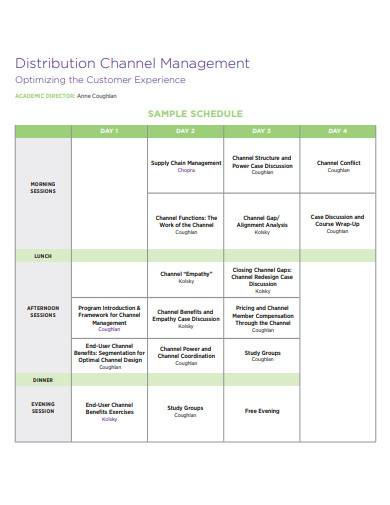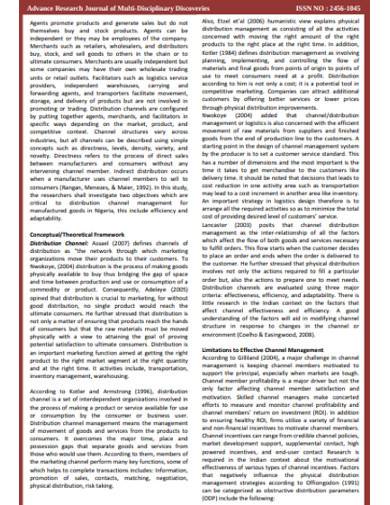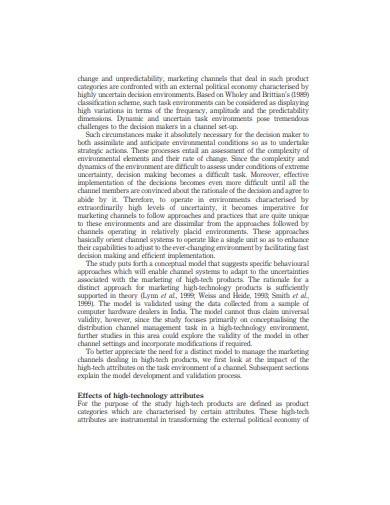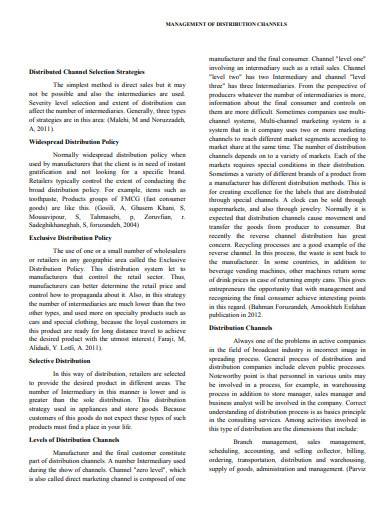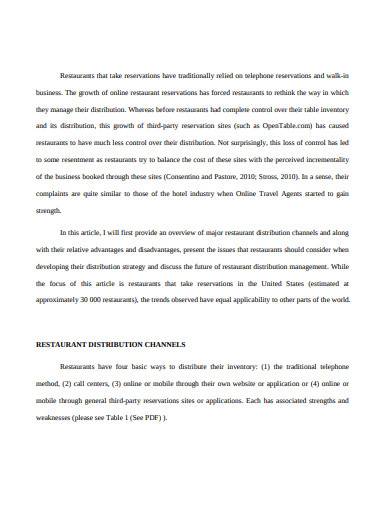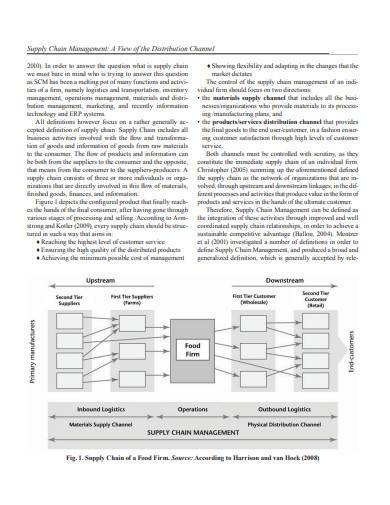Along with the active global economic growth, fast-moving consumer goods (FMCG) retail industry is growing drastically. For your information, FMCG is quite common in the retail industry because business people can easily sell them at a low expense. Affecting factors such as the increase of the global population, rising awareness, increasing income, and effective marketing are driving the growth of the FMCG market. Additionally, humans use these products in everyday use, which is a great factor in th growth of its market. However, due to its characteristics, the competition of the players in this industry is quite tight that they have to come up with competitor analysis and better distribution channel management to secure the right amount of market share.
What is Distribution Channel Management?
Also known as marketing channel management, distribution channel management is the means of handling the entire process of distributing the product and services of a company to the end-user, which is the customer. The distribution channels are the go-betweens or a chain of intermediaries that pass the products and services until it reaches the end-user. The go-betweens can be sales agents, retailers, wholesalers, or organizations. You should also know that this type of management can be a part of a marketing strategy.
Types of Distribution Channels
The distribution channel that a business use may vary depending on the relevant factors and characteristics of a particular business. Below are the primary channels that you can use as part of your marketing business plan.
1. Full Distribution
Coca Cola is one of the manufacturers that use this type of distribution channel. As you can see, the giant beverage company operates almost everywhere in the world. Their operation method allows them to deliver their goods to their consumers by making them available in various retailers, wholesalers, hotels, etc. However, since this channel involves many marketing channels, the distribution cost can be quite high, which may lower your profit. Still, it does not faze the significant players. Instead of the percentage, they aim for a high number of sales to gain a tremendous benefit. Many also test sample sales plans to increase their sales.
2. Discerning Distribution
Part of distribution channel management is conducting market research to understand the market. Depending on what product your firm is selling, involving many market go-betweens may not be feasible. Thus, you may choose a fewer number of intermediaries. This distribution method will allow you to narrow down the target market and lessen the distribution expenses. Dell is one of the companies that use this type of distribution. The tech company chooses a few trusted intermediaries such as Best Buy to distribute its products.
3. Exclusive or Direct Distribution
This type of distribution channel gives you more control over the distribution process. It allows you to deliver your products directly to the customers, cutting the retailers and wholesalers in the equation of the supply chain. Amazon Kindle is an example of this distribution method.
6+ Distribution Channel Management Samples
Take a look at these downloadable examples to get an idea of distribution company channel management looks like in the real world.
1. Distribution Channel Management Sample
2. Distribution Channel Management as an Engineering Drive Template
3. Distribution Channel Management Solutions Sample
4. Managing the Distribution Channels for High-Technology Products
5. Management of Distribution Channels Sample
6. Distribution Channel Management in Restaurant Industry
7. Supply Chain Management of the Distribution Channel Sample
What are the Processes Involved in the Distribution Channel Process
Whether you manufacture beauty products or running a fast-food chain business, managing your company’s distribution process can be tough. Thus, it would help if you plan it to maximize your sales opportunity carefully.
1. Understand Your Market
To ensure that you are delivering your products to the right end-users, you need to know who they are and what they need by conducting a market analysis. Through this step, you will know whether your customers prefer buying your products directly from your store or online. Take note of all the information that you gather from this process because you will use these data in the next steps.
2. List All the Potential Market Intermediaries
Now that you have understood your customers’ needs, you will be able to identify the potential market intermediaries, which can be in the form of wholesalers, retailers, agents, etc. In general, you can only sell your products in two ways, which are direct and indirect selling. Through direct selling, you will sell your product directly to the end-user. On the other hand, through indirect selling, you will sell your goods by involving one or more market intermediaries.
3. Do More Research
Once you have the list of potential go-betweens, you will have to study these firms and individuals to determine if they are suitable to distribute your products. We recommend you to set up a meeting and discuss a possible partnership agreement. This process should allow you to know more about your potential distributors. You may also need to conduct some research analysis to get enough information.
4. Choose the Perfect Distribution Channel
After understanding your target market and potential market intermediaries, it will be easier for you to decide which distribution channel fits your company needs. To maximize your profit, you can choose multiple channels.
Obtaining a strong distribution channel strategy is an excellent way to start if you are aiming to enhance your foodservice distribution process or looking for new product distribution. With the information that we discussed today, you should be able to secure this part of your business project management.
Related Posts
FREE 10+ Agile Project Management Samples in PDF
FREE 8+ Change Management Checklist Samples in PDF | DOC
FREE 5+ Risk Register Samples in PDF
FREE 6+ Resource Management Samples in PDF
FREE 5+ Vendor Management Samples in PDF
FREE 10+ Product Portfolio Management Samples in PDF | MS Word
FREE 10+ Management Work Plan Samples in PDF | DOC
FREE 13+ Communication Management Plan Samples in PDF | MS Word
FREE 9+ Time Management Resources Samples in PDF | MS Word
FREE 13+ Product Management Samples in PDF | DOC
FREE 10+ Management Memo Samples in PDF | DOC
FREE 11+ Real Estate Risk Management Samples in PDF
FREE 9+ Human Resources Management Plan Samples in PDF
FREE 7+ Stakeholder Management Strategy Samples in PDF | DOC
FREE 10+ Interest Rate Risk Management Samples in PDF | MS Word

